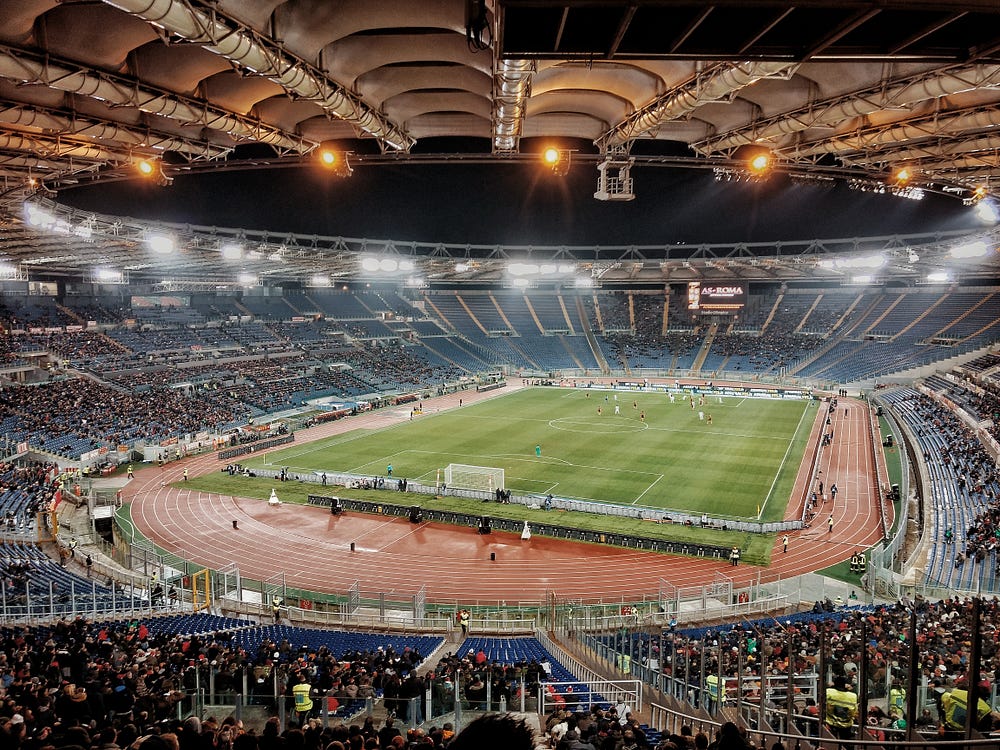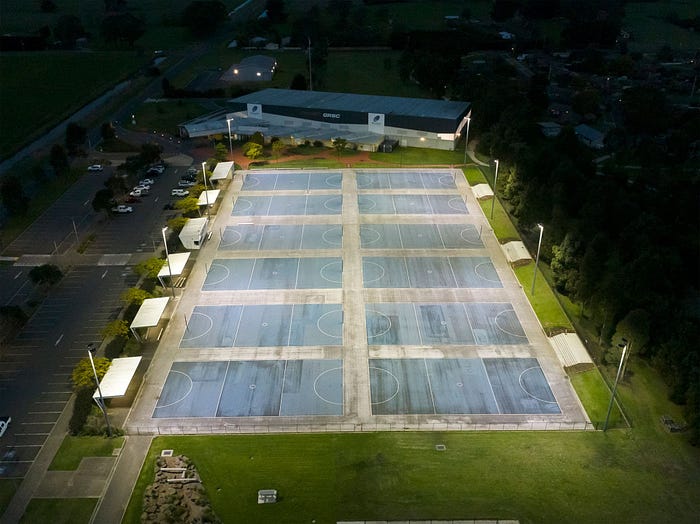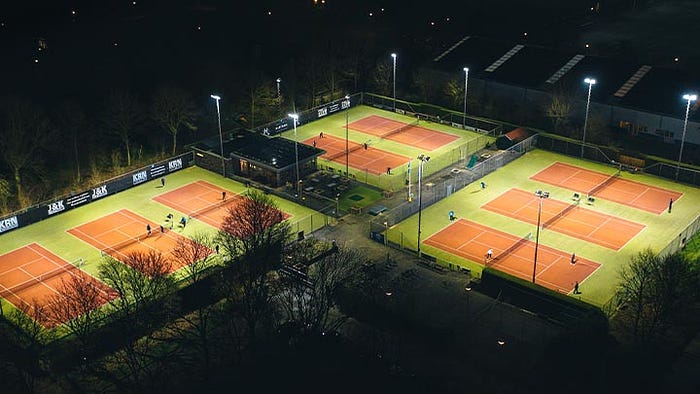Get Samples
If you are looking for industry and outdoor Lighting solutions,
look no further than Seeking LED-Lighting.
March 14, 2024

As a lighting designer, I have always been fascinated by the interplay between light and space. Over the years, I have worked on a range of projects, from intimate residential spaces to large-scale commercial installations. However, there is something particularly exciting about designing lighting for outdoor spaces. In this article, I will explore the latest trends in large-scale lighting design, including the role of large outdoor luminaires, innovative technologies, sustainable design practices, and more.
Introduction to Large-Scale Lighting Design
Large-scale lighting design is a complex and challenging field that requires a deep understanding of both the technical and aesthetic aspects of lighting. Whether you are working on a stadium, a public park, or a city street, the goal is the same: to create an inviting and engaging environment that is safe, functional, and visually stunning.
One of the key challenges of large-scale lighting design is to balance the need for functionality with the desire for creativity. On the one hand, lighting must provide adequate illumination for the space, ensuring that it is safe and accessible. On the other hand, lighting can also be used as a tool for creating mood, highlighting architectural features, and enhancing the overall aesthetic of the space.
Trends in Lighting Design for Outdoor Spaces
In recent years, there has been a shift towards more dynamic and flexible lighting solutions for outdoor spaces. Instead of static, fixed lighting systems, designers are now using a range of techniques to create lighting that can be adapted to different conditions and events. For example, some designers are using dynamic lighting to create immersive experiences that change throughout the day, while others are using responsive lighting that reacts to the movement of people and vehicles.
Another trend in outdoor lighting design is the use of color. While white light is still the most common choice for outdoor lighting, many designers are now experimenting with more colorful lighting schemes. This can be particularly effective for highlighting specific features or creating a festive atmosphere for special events.

The Role of Large Outdoor Luminaires in Lighting Design
Large outdoor luminaires are a crucial component of many large-scale lighting design projects. These fixtures are designed to provide high levels of illumination over large areas, making them ideal for lighting up parks, plazas, and other public spaces. They are also often used to highlight architectural features, such as buildings or monuments.
One of the key considerations when using large outdoor luminaires is to ensure that they are properly positioned and aimed. This requires a deep understanding of the principles of lighting design, as well as an awareness of the specific requirements of the space. For example, different types of luminaires may be needed for different areas, depending on factors such as the height of the space, the type of activity taking place, and the desired level of illumination.
Innovative Technologies in Large-Scale Lighting Design
Advances in lighting technology have opened up new possibilities for large-scale lighting design. For example, LED lighting has revolutionized the way that we think about energy efficiency, allowing designers to create highly efficient lighting schemes that use a fraction of the energy of traditional lighting systems.
Another innovative technology that is increasingly being used in large-scale lighting design is wireless control systems. These systems allow designers to control lighting from a central location, making it easier to adjust the lighting scheme in response to changing conditions. They can also be used to create complex lighting sequences that can be triggered by events or activities.
Sustainable Lighting Design Practices for Outdoor Spaces
Sustainability is a key consideration for any large-scale lighting design project. By using sustainable lighting practices, designers can reduce energy consumption, lower operating costs, and minimize the environmental impact of the project.
One of the most effective ways to achieve sustainable lighting is to use LED lighting. LED lighting is highly efficient, using up to 80% less energy than traditional lighting systems. It also has a longer lifespan, reducing the need for frequent replacement and disposal. Other sustainable lighting practices include using natural light wherever possible, using lighting controls to minimize energy use, and using materials that can be recycled or reused.
Examples of Successful Large-Scale Lighting Design Projects
There are many examples of successful large-scale lighting design projects around the world. One of the most iconic is the lighting of the Eiffel Tower in Paris, which uses a complex system of LED lights to create a dazzling display that can be seen from miles away. Another example is the lighting of the Sydney Opera House, which uses a combination of traditional lighting and projection mapping to create a dynamic and immersive experience.
Other successful large-scale lighting projects include the lighting of public spaces such as parks, plazas, and city streets. These projects often use a combination of lighting techniques, such as uplighting, downlighting, and wall washing, to create a cohesive and inviting environment.

Factors to Consider When Implementing Large-Scale Lighting Design
Implementing large-scale lighting design requires careful planning, coordination, and execution. There are many factors that must be taken into account, including the size and shape of the space, the type of activities that will take place, the desired mood and atmosphere, and the budget and timeline for the project.
One of the key factors to consider is the safety of the space. Lighting must provide adequate illumination for people to move around safely, particularly in areas such as parking lots and walkways. It is also important to consider the impact of lighting on wildlife, particularly in natural areas such as parks and forests.
Challenges in Large-Scale Lighting Design and How to Overcome Them
Large-scale lighting design projects can present a range of challenges, from technical issues such as achieving the desired level of illumination, to logistical issues such as coordinating with contractors and suppliers. One of the biggest challenges is to balance the need for functionality with the desire for creativity.
To overcome these challenges, it is important to work closely with all stakeholders involved in the project, including architects, engineers, contractors, and suppliers. Communication is key, and it is important to establish clear goals and timelines for the project. It is also important to stay up-to-date with the latest lighting technologies and design trends, as this can help to identify new solutions and approaches.
Tools and Resources for Large-Scale Lighting Design Projects
There are many tools and resources available to help designers plan and execute large-scale lighting design projects. These include software tools for creating lighting simulations and renderings, as well as online resources such as forums and blogs where designers can share ideas and collaborate with others in the industry.
It is also important to stay up-to-date with industry events and conferences, as these provide opportunities to learn about the latest trends and technologies, as well as to network with other professionals in the field.
Conclusion: The Future of Large-Scale Lighting Design
As we look to the future of large-scale lighting design, there is no doubt that technology will continue to play a major role. From LED lighting to wireless control systems, new technologies are opening up exciting possibilities for designers to create dynamic and sustainable lighting solutions.
However, it is also important to remember that lighting design is an art as well as a science. As designers, we must always strive to balance the technical requirements of the project with the desire to create beautiful, engaging, and meaningful lighting solutions that enhance the spaces in which we live, work, and play.
CTA: If you are planning a large-scale lighting design project, be sure to work with an experienced and knowledgeable lighting designer who can help you navigate the complex challenges of the field. Contact us today to learn more about how we can help you create a stunning and functional lighting solution for your outdoor space.